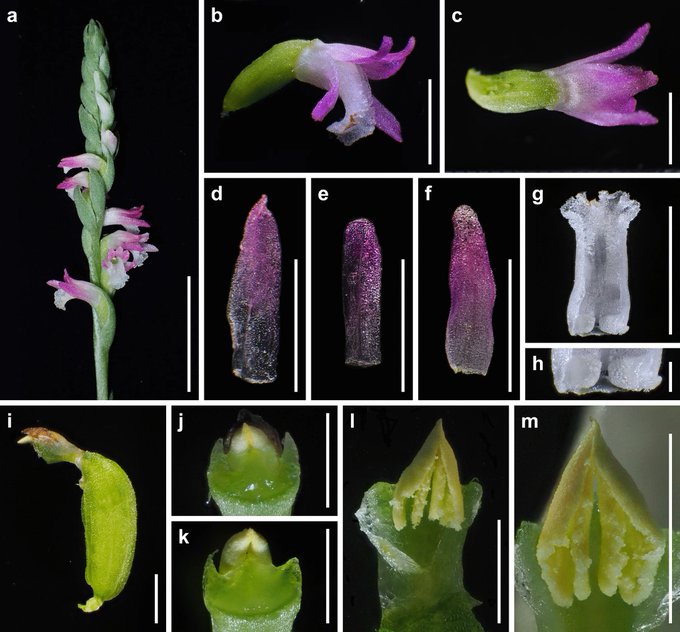A new orchid species have been found in Japan, and its petals appear to be made of glass. A multi-institutional team of seven researchers found this new orchid species. With flimsy petals and an ethereal opening that appears to glisten like silver glitters. The pink blossom sprouts, folds, and bends gently.
The researchers point out that new plant species are uncommon in Japan. Even though the country’s flora habitat has undergone many studies. Nonetheless, they discovered the rosy pink orchid near Hachijo Island in Tokyo Prefecture. Named “Spiranthes hachijoensis” in honor of its origin.
The new pink orchid species can be found in familiar areas like lawns and parks in Japan. As well as private gardens and balconies. According to the team’s findings, other new species may be hiding in common locations, out of sight. Their statement encourages other researchers to conduct research in their own homes rather than in remote tropical rainforests. Suggesting that scientific breakthroughs may be right under their noses.
Spiranthes hachijoensis”
Spiranthes, the most well-known and beloved orchid in Japan, has been revered for generations. It’s even in the Manyoshu, Japan’s oldest extant poetry collection. The discovery of the new pink orchid species represents a significant success for the Japanese team of researchers. Because it was previously thought that the Spiranthes on the Japanese mainland consisted of only one species, Spiranthes australis. On the Japanese mainland, Professor Suetsugu discovered several communities of an unknown Spiranthes taxon with hairless flower stems.

Some of the samples were “from potted plants and gardens”, including ones kept at a high school in Japan’s central Gifu region.
“From its curious look and dainty blooms that resemble glasswork, this flower has long been loved by people,” the university said
In addition, the plant, with its spiraling blossoms, is mentioned in Japan’s oldest anthology of poems, the eighth-century “Manyoshu”.
The discovery of the new type of spiranthes, sometimes known as “ladies’ tresses”, was announced last week in the Journal of Plant Research. It was given the name “hachijoensis” because many samples were found on Tokyo’s Hachijojima island.













